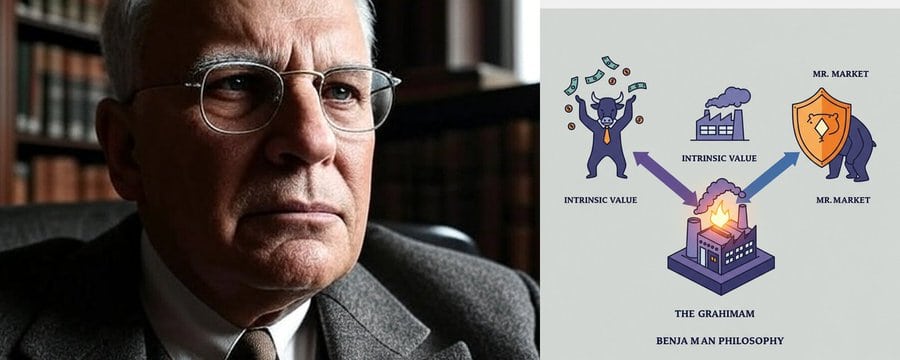The Bedrock of Value Investing
Benjamin Graham didn’t just create rules; he built a complete philosophy to replace speculation with discipline. This system rests on three timeless pillars that provide a rational framework for navigating irrational markets.
Intrinsic Value
Every business has an underlying value based on its assets and earnings, independent of its stock price. Your first job is to calculate this value.
Margin of Safety
The cornerstone. Only buy a stock when its market price is significantly below its intrinsic value. This is your protection against error and bad luck.
Mr. Market
Treat the manic-depressive market as your servant, not your guide. Exploit his mood swings to buy low from his pessimism and sell high into his euphoria.
The Two Paths of the Intelligent Investor
Graham insisted you must first know yourself. Your strategy depends on the “intelligent effort” you are willing to commit. Choose your path below to see the corresponding playbook.
The Graham Toolkit
Turn theory into practice. These interactive tools help visualize Graham’s quantitative rules for finding and valuing potential investments.
Defensive Checklist Simulator
This radar chart visualizes Graham’s 7-point test for defensive stocks. A perfect score creates a complete heptagon, indicating a company has passed all tests for size, stability, and value.
Valuation Zone Calculator
Graham’s rule: P/E Ratio × P/B Ratio must be less than 22.5. Use the sliders to see if a stock’s valuation falls within the Margin of Safety zone.
The Evolution of Value
Value investing didn’t stop with Graham. His most famous student, Warren Buffett, guided by Charlie Munger, evolved the system for a new economic era.
The Graham Way
🚬
“Cigar Butt” Investing
Find fair companies at wonderful prices. Focus on quantitative bargains based on tangible asset value, even if the business itself is mediocre.
The Buffett-Munger Way
🏰
“Economic Moat” Investing
Find wonderful companies at fair prices. Focus on qualitative factors like brand, competitive advantage, and long-term earning power.
Value vs. The World
How does value investing stack up against other popular market philosophies? Each is built on a fundamentally different belief about how markets work.


Hi, this is a comment.
To get started with moderating, editing, and deleting comments, please visit the Comments screen in the dashboard.
Commenter avatars come from Gravatar.
nice article